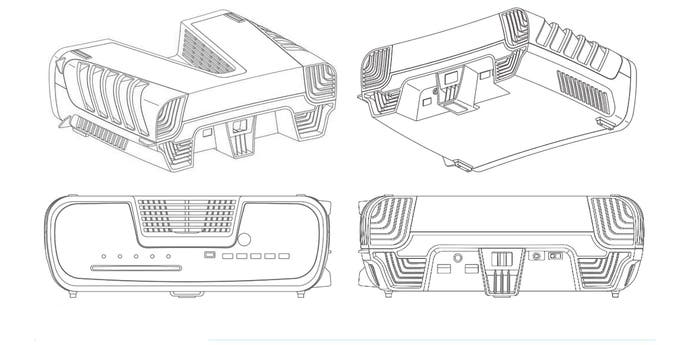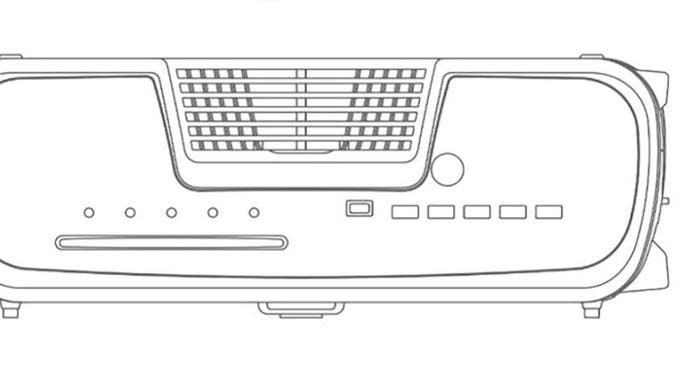Sony's latest PS5 details: the Digital Foundry analysis
Even the minor reveals count as major headline news.
It's official. Sony's 'next generation console' is now officially named PlayStation 5, it's coming at the tail-end of 2020, it has a fascinating series of controller upgrades vs the established Dual Shock 4 - and if it wasn't already clear, the bespoke solid-state storage solution is going to be a game-changer. These are the key takeaways from the latest Wired magazine exclusive, which tells us much about the new system while at the same time keeping the vast majority of its technological secrets under wraps. Look closer though and there's plenty of 'buried treasure' - small facts and asides that put a lot of the recent leaks into context.
In lieu of specs, we get to understand a little more of Sony's next generation vision. Immersion seems to be the key theme surrounding the new controller for PlayStation 5, which we're told looks very similar to the existing Dual Shock 4, albeit with an 'extra hole' which Wired author, Peter Rubin, believes may be a microphone for a voice activated assistant. Mark Cerny shut down that particular avenue of investigation but what was prepared to share was certainly interesting - and it's all about receiving more feedback from the game via your interaction with the controller.
There's a description of how the user can feel more closely connected with in-game environments via their 'feel', delivered with Sony's take on the precision HD rumble feature built into Switch's Joy-Cons. And then there's the evolution of the triggers, which can now provide varying levels of resistance, likened to the increasing tension offered by a bow as you pull the drawstring. Interesting stuff, but also welcome are a couple of quality of life improvements - a shift to USB-C for wired connectivity and charging, along with a larger capacity battery. At the same time we're told that the new pad remains lighter than an Xbox pad (with batteries inserted).
There's welcome confirmation of hardware-accelerated ray tracing features in the PS5 graphics core, along with an example from EA chief studio officer Laura Miele of how the technique may be deployed - specifically in calculating more realistic ambient occlusion and ray-traced shadows. We've seen these features in some of the Nvidia RTX-supported titles on PC and as a first step into real-time hardware ray tracing, it may not match up to what we're seeing in PC games like Control, but as with any console, expect to see developers get more from the technology as the generation progresses. In the meantime, a look at Nixxes' RTX implementation for Shadow of the Tomb Raider may give some idea of the kind of effect Miele is referring to.

It's interesting to note that Sony still isn't talking much about the PS5's GPU or CPU (though eight cores and 16 threads are now officially confirmed), but is very keen indeed to talk more about the SSD and why it is important. Sony believes that its bespoke solution is faster than any PC equivalent, and although not confirmed, I wouldn't be surprised to see deeper integration at the hardware level, with the solid-state storage modules integrated into the mainboard itself.
In terms of the advantages, there are speed improvements, efficiency advantages (specifically, not having to replicate data across the drive owing to the virtual elimination of seek-time in solid-state media) while Bluepoint president Marco Thrush describes how instant access to data reduces friction in-game - meaning the elimination of locked doors that exist only to slow the player down while new data streams in behind the scenes (Microsoft made the exact same point in its Scarlett teaser).
In truth, the shift to solid-state storage is hugely important, not just in terms of access times and loading speeds but because it brings mass storage - and a colossus increase in data - much closer to the CPU and GPU than we've ever seen before. In its Scarlett trailer, Microsoft even refers to their SSD as 'virtual RAM' - and the implications here in leveraging the processor in ways we've never seen before becomes a little clearer. More detail and more variety resulting in richer and more compelling worlds. The sky's the limit.
However, games are getting bigger and solid-state storage is a finite resource. Presumably with that in mind, Sony also reveals details of a storage management system that sounds like an evolution of the 'intelligent delivery' system used on some Xbox titles, the idea being to maximise SSD space by only installing portions of the game you'll actually use - the classic example being the removal of a single-player campaign once finished, while retaining the data required for the multiplayer mode.
It's an essential feature as I strongly suspect that the kind of expanded storage options we have on current generation machines won't be available on PS5 or indeed Project Scarlett - external storage is likely not fast enough, nor is the USB standard wide enough in bandwidth terms to match the consoles' bespoke SSD solutions, relegating it to back-up status only. Sony isn't taking about how much SSD space we'll get, but 1TB seems likely - akin to today's PS4 Pro or Xbox One X - but having to accommodate games that will be delivered on 100GB Blu-ray, a doubling of the standard disc size for titles of this generation.
Sony's take on 'intelligent delivery' does at least demonstrate that the platform holder is aware of potential limitations in the shift to solid-state storage as well as its many benefits. Hopefully there'll be further solutions - storage and IO in general is a clear weakness of the current generation machines, but at the very least, this did open the door to drive swap-outs and USB storage enhancements that could effectively eliminate the limitations of the stock drive you were supplied with. In this respect, next-gen could prove rather more challenging.
There are some further takeaways from the Wired article that I enjoyed - specifically, the confirmation that the bizarre Brazilian patent for a new console-like (if rather extraordinarily shaped) design is indeed a PlayStation 5 development kit. Sony's designs for development hardware always make a statement, but rarely reflect the look of final consoles. However, with that said, doubling down on cooling does seem to be a key aspect of the dev kit design - more so than anything we've seen before.
Perhaps this is wish fulfilment on my behalf, but I really hope to see a robust solution for PlayStation 5 that avoids the 'jet engine' effect that kicks in on many examples of PS4 and PS4 Pro hardware. An emphasis on innovative cooling also opens the door to higher processor frequencies - and may possibly help to put some of the leaked 'Gonzalo' AMD processor specs into context - particularly the very, very high GPU core clocks.
In terms of thermal management, it's also worth mentioning that high performance solid-state storage modules can see a reduction in performance if they aren't adequately cooled, so while the PS5 dev kit design may not represent final hardware, I wouldn't be surprised if the final boxes we receive are somewhat larger than PS4 and PS4 Pro - and that's fine by me if the acoustics situation can be resolved.
Beyond that, those hoping for more on the processing power of the PlayStation 5 were left wanting. Microsoft produced teaser images for the Project Scarlett processor, which gave a vague idea of the system configuration, but Sony is keeping its powder dry for now. The confirmation of eight Zen 2 cores in the initial reveal really tells us all we need to know about the CPU side of the equation - this is a true generational leap. However, the graphics side of the equation remains unknown. The teraflop war is irrelevant now, as we saw in our apples-to-apples GCN vs RDNA compute face-off, not to mention how key Xbox One X titles have stacked up against PS4 Pro equivalents. Indeed, I wouldn't be surprised to see Mark Cerny double down on the philosophy seen in the Pro, with innovative solutions and smart design just as important as raw shader count, if not more so. As a consequence of this, a smaller processor means a more cost-efficient box - and Sony got the balance just right between performance and build cost with PS4.
What's clear is that once the generation is truly under way, the GPU will be carrying out tasks not really touched upon by the consoles of today. Hardware-accelerated ray tracing is one example, of course, but also intriguing is the mention by EA's Laura Miele of a GPU capable of accelerating deep learning tasks - something Phil Spencer has already hinted at for next-gen Xbox silicon. And let's not discount the ingenuity of developers in using bespoke hardware in innovative, unexpected ways - after all, initial checkerboarding techniques were derived from exploiting GPU hardware support for multi-sampling anti-aliasing.
We're still over one year away from the release of the new wave of console hardware, so we should expect a drip-feed of further information - and if the next generation follows the pattern set by the last, we may see much bigger, more traditional events showcasing the new consoles at the tail-end of Q1 2020. In the meantime, Sony is whetting the appetite with 'minor' reveals in this Wired article that would be major headline news otherwise: a PS5 port of GT Sport with enhanced controller support, for example. And then there's the revelation that Bluepoint Games is working right now on a PlayStation 5 game - presumably the ambitious remake project the team told us about way back in March 2018. If the 'background detail' from this Wired report is so exciting, the full, official reveal should be astonishing.



